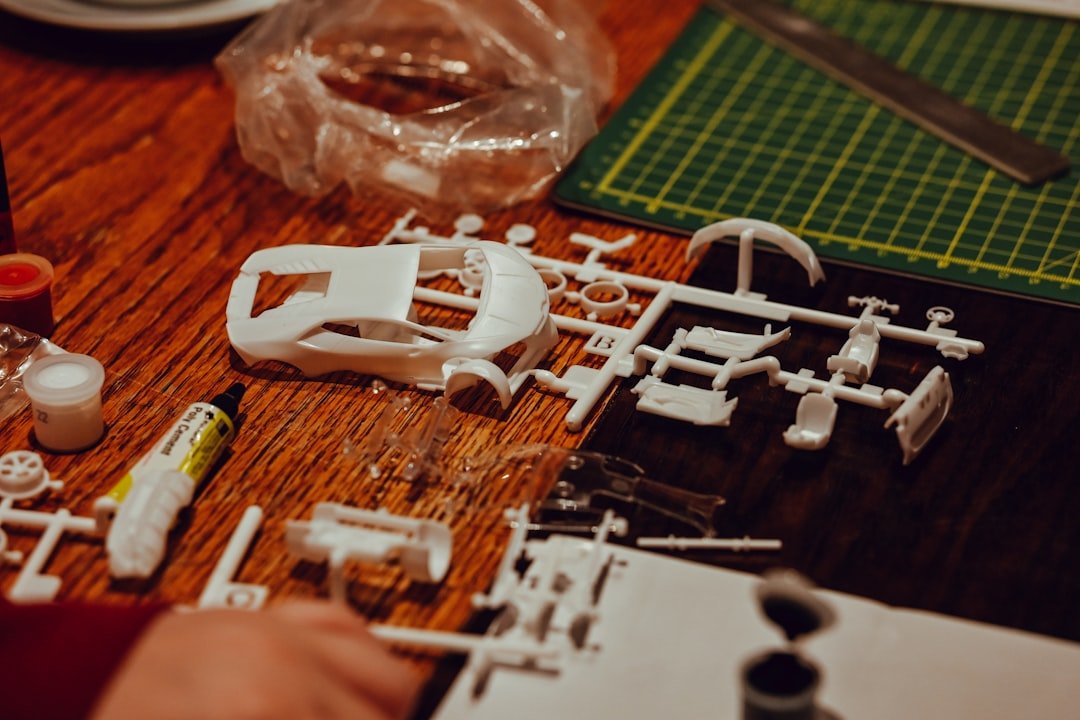Now Reading: Crafting: The Untold Story in Gaming
-
01
Crafting: The Untold Story in Gaming
Crafting: The Untold Story in Gaming

When I reflect on the evolution of crafting in gaming, I can’t help but marvel at how far it has come since the early days of pixelated adventures. Initially, crafting was a rudimentary mechanic, often limited to combining a few items to create something slightly more useful. Games like “The Legend of Zelda” introduced the concept of item creation, but it was often simplistic and served more as a means to an end rather than a fully fleshed-out system.
As technology advanced and game design became more sophisticated, crafting began to take on new dimensions, evolving into a complex and integral part of many gaming experiences. In recent years, I have noticed that crafting systems have become increasingly intricate and rewarding. Titles such as “Minecraft” and “The Elder Scrolls V: Skyrim” have transformed crafting into a multifaceted experience that allows players to gather resources, create unique items, and even shape their environments.
This evolution reflects not only advancements in technology but also a growing understanding of player engagement. Crafting has shifted from a mere side activity to a central gameplay mechanic that can define the entire experience, allowing players to immerse themselves in the world and leave their mark on it.
Key Takeaways
- Crafting in gaming has evolved from simple item combination to complex systems with multiple components and customization options.
- Crafting plays a crucial role in player progression, allowing them to create powerful items and gear to advance in the game.
- Crafting serves as a form of creativity and expression, allowing players to personalize their gaming experience through unique creations.
- The economic impact of crafting in gaming is significant, with virtual economies and in-game markets revolving around crafted items.
- Crafting in multiplayer games fosters social interaction, collaboration, and trading among players, enhancing the overall gaming experience.
The Role of Crafting in Player Progression
Crafting plays a pivotal role in player progression, serving as a bridge between the initial stages of gameplay and the more advanced challenges that lie ahead. I have often found that the act of crafting not only enhances my character’s abilities but also provides a sense of accomplishment that is hard to replicate through other mechanics. In many games, crafting allows me to create better weapons, armor, and tools that are essential for tackling tougher enemies or exploring uncharted territories.
This progression system encourages me to gather resources and invest time in honing my crafting skills, creating a rewarding loop that keeps me engaged. Moreover, crafting often intertwines with other gameplay elements, such as quests and exploration. I recall instances where I had to gather specific materials from distant lands or defeat formidable foes to unlock new crafting recipes.
This interconnectedness adds depth to the gameplay experience, as I find myself motivated not just by the desire to progress but also by the thrill of discovery. The satisfaction of finally crafting that elusive item after hours of exploration and resource gathering is a feeling that resonates deeply with me, reinforcing the importance of crafting in my overall gaming journey.
Crafting as a Form of Creativity and Expression

One of the most compelling aspects of crafting in gaming is its ability to serve as a canvas for creativity and self-expression. When I engage in crafting, I am not merely following a set of instructions; I am given the freedom to experiment and innovate. Whether it’s designing intricate structures in “Minecraft” or customizing my character’s gear in “Destiny,” crafting allows me to showcase my unique style and preferences.
This creative outlet is particularly appealing because it empowers me to leave my personal mark on the game world. In many ways, crafting becomes an extension of my personality within the game. I find joy in experimenting with different materials and designs, often leading to unexpected results that surprise even me.
The ability to create something entirely new from scratch fosters a sense of ownership over my creations. It’s not just about the end product; it’s about the journey of creation itself. This aspect of crafting resonates with many players, as it transforms gaming from a passive experience into an active one where we can express ourselves and share our creations with others.
The Economic Impact of Crafting in Gaming
The economic impact of crafting in gaming cannot be overstated. As I delve into various titles, I often encounter intricate economies built around crafting systems. In games like “World of Warcraft,” crafting professions play a crucial role in the player-driven economy, where resources are gathered, crafted into valuable items, and traded among players.
This dynamic creates a vibrant marketplace that mirrors real-world economic principles, allowing me to engage in trade and commerce while enhancing my gameplay experience. Moreover, the economic implications extend beyond individual games; they can influence entire gaming communities. I have witnessed how crafting can lead to the rise of specialized roles within multiplayer environments, where players focus on gathering resources or mastering specific crafting skills to meet the demands of their peers.
This specialization fosters collaboration and interdependence among players, creating a sense of community that enriches the overall gaming experience. The economic aspect of crafting not only enhances gameplay but also adds layers of complexity that keep me invested in the virtual world.
The Social Aspect of Crafting in Multiplayer Games
Crafting takes on an entirely new dimension in multiplayer games, where social interactions become integral to the experience. I have found that collaborating with friends or fellow players during crafting sessions can lead to memorable moments and shared achievements. Whether we are pooling resources to create powerful gear or working together on ambitious building projects, the social aspect of crafting fosters camaraderie and teamwork that enhances our enjoyment of the game.
In many multiplayer titles, crafting also serves as a means of communication and connection among players. I often find myself exchanging tips, sharing recipes, or even trading crafted items with others in the community. These interactions create bonds that extend beyond the game itself, as we share our experiences and celebrate each other’s successes.
The social fabric woven through crafting not only enriches my gameplay but also cultivates friendships that can last long after the game is over.
Crafting as a Core Gameplay Mechanic

The Rise of Immersive Survival Experiences
Games like “Ark: Survival Evolved” rely heavily on crafting mechanics to create immersive survival experiences. Resource management and item creation are essential for survival, making crafting a vital component of the gameplay. I’ve experienced firsthand how these mechanics can elevate the gaming experience, making it more engaging and challenging.
Depth and Complexity through Crafting
The integration of crafting mechanics adds layers of depth to the gameplay, keeping me engaged for hours on end. The need to gather resources, craft items, and strategize around these mechanics requires skill and mastery, making it an essential part of the gaming experience. In some cases, my success hinges on my ability to master the crafting system, directly impacting my overall performance within the game.
A New Era of Gameplay
The evolution of crafting has transformed the way I interact with the game world. What was once a simple activity has become a fundamental aspect of gameplay, shaping my experiences and influencing my decisions. As crafting continues to play a central role in modern games, I’m excited to see how it will continue to evolve and shape the gaming landscape.
The Cultural Significance of Crafting in Gaming
Crafting holds cultural significance within gaming communities, reflecting broader themes of creativity, collaboration, and resourcefulness. As I engage with various titles, I often notice how different cultures influence crafting mechanics and aesthetics. For instance, games inspired by traditional craftsmanship may incorporate specific techniques or materials that resonate with players from those cultures.
This cultural infusion enriches the gaming experience and fosters appreciation for diverse artistic expressions. Moreover, crafting has become a symbol of empowerment within gaming culture. It represents the idea that players can take control of their experiences and shape their narratives through creativity and ingenuity.
I have seen how this resonates with players who seek agency within virtual worlds, allowing them to express their identities and values through their crafted creations. The cultural significance of crafting extends beyond individual games; it reflects a collective desire for self-expression and connection within the gaming community.
The Psychological Benefits of Crafting in Gaming
Engaging in crafting within games offers numerous psychological benefits that enhance my overall well-being. The act of creating something from scratch provides a sense of accomplishment and fulfillment that can be incredibly rewarding. As I immerse myself in crafting activities, I often experience a flow state where time seems to stand still, allowing me to escape from daily stresses and focus solely on the creative process.
Additionally, crafting can serve as a form of mindfulness practice. When I concentrate on gathering materials or meticulously designing an item, I find myself fully present in the moment. This focus can be therapeutic, providing an outlet for stress relief and self-expression.
The psychological benefits of crafting extend beyond mere enjoyment; they contribute to my mental health by fostering creativity, reducing anxiety, and promoting a sense of achievement.
Crafting as a Means of Resource Management
Resource management is an essential aspect of many games, and crafting serves as a vital tool for navigating this challenge. As I explore vast landscapes filled with materials waiting to be harvested, I am constantly reminded of the importance of strategic planning when it comes to resource allocation. Crafting allows me to transform raw materials into valuable items that can enhance my gameplay experience or provide essential supplies for survival.
In survival games like “Don’t Starve,” effective resource management through crafting becomes crucial for staying alive in harsh environments. I often find myself weighing the pros and cons of using limited resources for immediate needs versus saving them for future endeavors. This decision-making process adds depth to my gameplay experience and encourages me to think critically about how I approach challenges within the game world.
The Future of Crafting in Gaming
As I look ahead to the future of crafting in gaming, I am filled with excitement about the possibilities that lie ahead. With advancements in technology such as virtual reality (VR) and augmented reality (AR), I envision a world where crafting becomes even more immersive and interactive. Imagine being able to physically manipulate materials in a virtual space or collaborating with friends in real-time to create intricate designs—these innovations could revolutionize how we engage with crafting mechanics.
Furthermore, I anticipate that developers will continue to explore new ways to integrate crafting into diverse genres beyond traditional RPGs or survival games. As gaming evolves, so too will our understanding of what crafting can offer—whether it’s enhancing storytelling through crafted items or creating dynamic economies within multiplayer environments. The future holds immense potential for innovation in crafting systems, promising experiences that will captivate players like me for years to come.
The Unexplored Potential of Crafting in Gaming Lore
Crafting has immense unexplored potential within gaming lore—a dimension that could deepen narratives and enrich player experiences even further. As I engage with various titles, I often find myself yearning for more context surrounding crafted items or materials within the game world. Imagine if each crafted item had its own backstory or significance tied to the lore—this could transform mundane resource gathering into an epic quest filled with meaning.
By weaving crafting into the fabric of game narratives, developers could create opportunities for players like me to connect more deeply with their creations. Each crafted item could serve as a tangible representation of my journey through the game world—a testament to my efforts and achievements along the way. This integration would not only enhance immersion but also foster emotional connections between players and their crafted creations, elevating the overall gaming experience.
In conclusion, crafting has evolved into a multifaceted mechanic that enriches gameplay across various genres while offering opportunities for creativity, social interaction, resource management, and personal expression. As I continue my journey through virtual worlds filled with endless possibilities for creation, I am excited about what lies ahead for this dynamic aspect of gaming culture.
Crafting in games has become a crucial aspect of gameplay, allowing players to create unique items and weapons to aid them on their adventures. In a related article on The Gaming Revolution, the impact of virtual reality and augmented reality on the gaming industry is explored. These technologies have the potential to revolutionize the way players interact with games, including how they approach crafting and customization. As players immerse themselves in virtual worlds, the importance of crafting in telling the real story of a game becomes even more apparent.



























